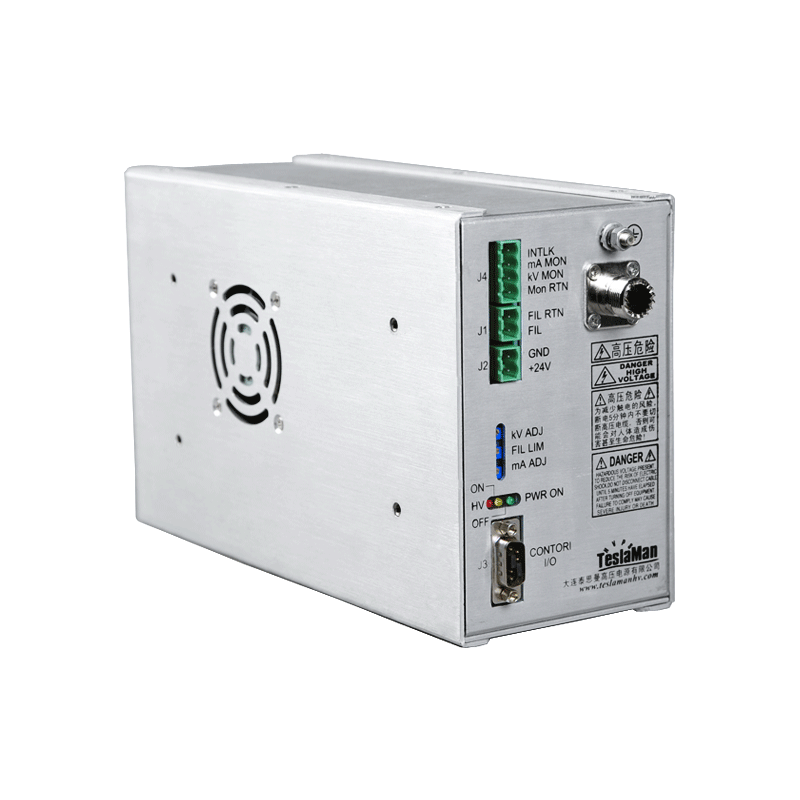Application Advantages of Bipolar Pulsed Power Supply
1. Technical Principles and Structural Characteristics
The bipolar pulsed power supply is a power electronic device capable of outputting pulse signals with alternating positive and negative polarities. Its core lies in the coordinated control of high-frequency switching devices (such as IGBTs and MOSFETs) to achieve polarity switching and parameter modulation of pulse waveforms. Compared with traditional unipolar power supplies, its topology typically includes bidirectional energy conversion circuits, which can form symmetric or asymmetric pulse sequences at the load end. Parameters such as pulse width, frequency, and duty cycle can be precisely adjusted according to application requirements. The key advantages of this power supply stem from its unique bipolar energy output mode, enabling performance optimization in various scenarios that unipolar power supplies cannot achieve.
2. Core Advantages in Multidisciplinary Applications
1. High-efficiency Processing in Material Treatment
In semiconductor manufacturing and nanomaterial processing, bipolar pulsed power supplies significantly improve the uniformity of plasma etching and deposition processes by applying alternating positive and negative pulses. For example, during silicon wafer etching, positive pulses accelerate ion bombardment, while negative pulses neutralize surface charge accumulation to avoid etching deviations caused by charge deposition. Experimental data shows that this mode can increase the etching rate by over 30% and reduce surface roughness by 50%, which is crucial for high-precision chip manufacturing. In the field of coating deposition, bipolar pulses enhance the ionization efficiency of target materials, increasing film adhesion by 40% and effectively solving the problem of excessive internal stress in coatings caused by unipolar power supplies.
2. Precise Regulation in Biomedical Engineering
In electrophysiological research and therapeutic devices, the advantage of bipolar pulsed power supplies lies in their low damage to biological tissues and precise stimulation. Take cardiac defibrillators as an example: traditional unipolar pulses may cause irreversible damage to myocardial cells, while bipolar pulses reduce stimulation energy by 40% through the timing coordination of positive and negative pulses, maintaining the same defibrillation success rate. In the field of neuroscience, when bipolar pulses are used for deep brain stimulation, they reduce electrolytic reactions near electrodes, extending the service life of implanted devices (2-3 times longer than unipolar power supplies) and lowering the risk of tissue inflammation. This alternating polarity stimulation mode is also applied in muscle electrical stimulation rehabilitation devices to achieve selective activation of different muscle groups by adjusting pulse parameters.
3. Optimization Management in New Energy and Energy Storage Systems
In the field of fast charging for lithium-ion batteries, bipolar pulse charging technology breaks through the polarization limitation of traditional constant-current charging through cycles of positive pulse charging-negative pulse depolarization. Studies have shown that this technology can increase battery charging speed by 50% and extend cycle life by 20%, effectively addressing the risks of lithium precipitation and thermal runaway in unipolar charging. Furthermore, in fuel cell systems, bipolar pulsed power supplies can dynamically adjust the plate potential to inhibit catalyst poisoning, increasing fuel cell efficiency by 15%-20%, especially suitable for scenarios requiring frequent load changes such as vehicle mobile power supplies.
4. Environmental Governance and Industrial Wastewater Treatment
In advanced oxidation water treatment technology, bipolar pulsed power supplies promote the generation efficiency of hydroxyl radicals (·OH) in water through high-intensity pulsed electric fields. Compared with unipolar power supplies, bipolar pulses increase the degradation rate of organic pollutants by 35% while reducing energy consumption by 25%. When treating refractory industrial wastewater (such as pharmaceutical wastewater and printing and dyeing wastewater), this technology can increase the COD removal rate to over 90%, avoiding the decline in treatment efficiency caused by electrode polarization in unipolar power supplies.
3. Technical Development Trends and Challenges
The application expansion of bipolar pulsed power supplies relies on the progress of power devices and control algorithms. Currently, the popularization of wide-bandgap semiconductors such as silicon carbide (SiC) and gallium nitride (GaN) has pushed their switching frequency beyond 100kHz, laying the foundation for high-frequency pulse applications. However, how to achieve low-loss polarity switching at high power densities and stabilize waveforms under complex loads remain technical challenges to be urgently addressed. In the future, with the integration of intelligent control algorithms and digital twin technology, bipolar pulsed power supplies are expected to play a more critical role in cutting-edge fields such as flexible electronics manufacturing and quantum computing devices.




















